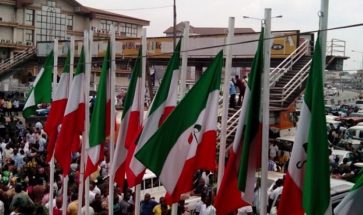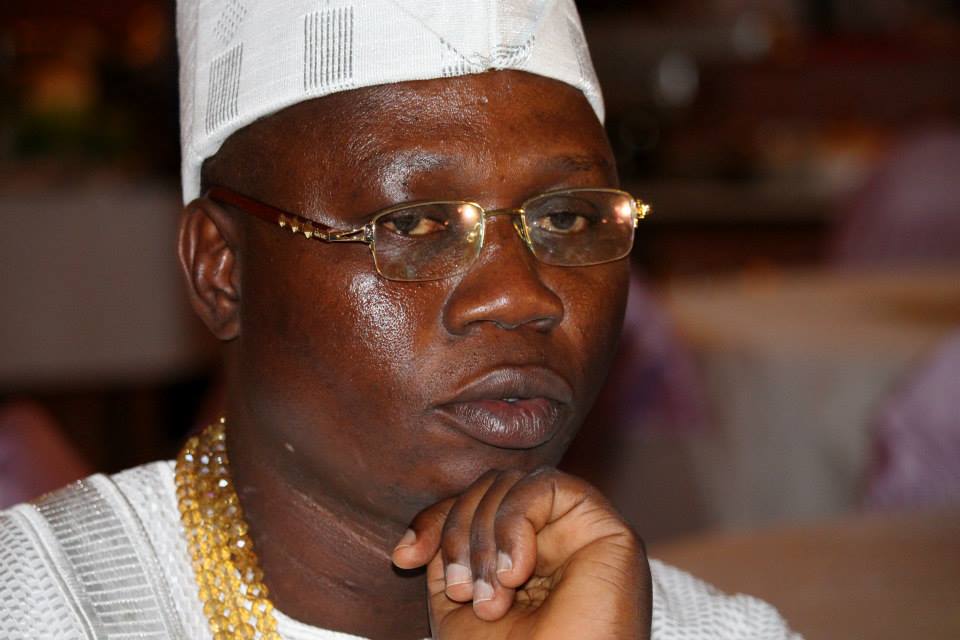Nigeria’s population is the seventh largest in the world, with over 180 million people and largest economy in Africa. It accounts for nearly half of the total population of West Africa and more than 15% of the total population of the entire African continent (Fernstrom, 2011). But Nigeria still faces formidable economic, social, industrial, and human development challenges, and because of all these challenges, the country is seen as one of the poorest countries in the world despite the huge resources from crude oil export (Nwankwo & Njogo, 2013).
The electricity sector in Nigeria generates, transmits and distributes megawatts(MW) of electric power that is significantly less than what is needed to meet basic household and industrial needs. Nigeria has 23 power generating plants connected to the national grid with the capacity to generate 11,165.4 MW of electricity.[1]
A national grid is a system of special wires that take electricity from power stations (= places where electricity is made) to all parts of a country.[2]
Electricity supplied to the grid in Nigeria is produced from two major sources: gas and hydro power plants with gas accounting for about 75.5% of Nigeria’s total energy mix while hydro accounts for the other 24.5%. [3]
Going down memory lane, power generation in Nigeria can be traced to 1886 when 2 generating sets were installed to serve the colony of Lagos.
Subsequently, in 1951, the act of parliament led to the establishment of the Electricity corporation of Nigeria and in 1961, the Nigeria Dams Authority was established with the goal of developing hydroelectric power[4]
As part of the evolution in the Power Industry in Nigeria, the Federal Government by Decree No. 24 of 1972 created the National Electric Power Authority (NEPA). This was consequent upon the merger of the Electricity Corporation of Nigeria (ECN) and Niger Dams Authority (NDA). In September 1990, the partial commercialization came into being with the appointment of a Managing Director/Chief Executive to superintend over the Corporation. Also, the Authority was divided into four autonomous divisions namely: Generation and Transmission; Distribution and Sales; Engineering; Finance and Administration. Each division was headed by an Executive Director.[5]
In the view of Iwayemi (2008), Nigeria’s electricity crisis is striking for a variety of reasons: First is its occurrence despite the enormous endowments of non-renewable and renewable primary energy resources. The resource endowments of crude oil and natural gas currently estimated at 35 billion barrels and 185 trillion cubic feet, respectively, are more than adequate to fuel much of Sub-Saharan Africa energy demand for several decades. Second is that coal reserves are also substantial at 2.75 billion metric tons. Also, large amount of renewable energy resources including hydroelectricity, solar, wind and biomass energy are present. One of the many paradoxes in Nigeria is energy/electricity poverty amid plenty. Third, despite being a world ranking exporter of liquefied natural gas (LNG), Nigeria’s gas-dominated electric grid experienced frequent collapse linked largely to inadequate gas supply. Gas pipeline vandalization associated with resource control-linked militancy in the oil producing Niger Delta has compounded the supply problem. Huge gas flaring has been a regular feature of the Nigerian oil industry since production began in 1958. This wasteful gas flaring has consistently ranked Nigeria among the world’s largest source of carbon emissions, a major factor in global warming.
Fourth, the several billion dollars of public investment that went into generation and transmission capacity expansion in the past decades contrast sharply with the extremely poor supply of electricity. Lastly, there are the high social, economic and environmental effects of poor public power supply and its extensive substitution with highly polluting generators. Overtime, the Nigerian economy has been described, by commentators on the power sector, as a power-generating set economy because of the enormous amount of off-grid electricity being generated to satisfy its power requirements (Onochie, Obanor, & Aliu, 2015).
PROBLEMS OF THE NIGERIAN POWER SECTOR
The main problem against safe and efficient electricity supply in Nigeria is inadequate infrastructure, poor history of corporate governance and inadequate pricing structure to support the eco- nomics of power generation, transmission and end user distribution (NAPE, 2016).
Inadequate Infrastructure
The existing power generation, transmission and distribution infrastructure was constructed at various times between 1950 till date largely through ECN, NEPA and PHCN. This infrastructure includes hydro and thermal power stations, a transmission grid and several distribution infrastructures (Eke, 2014). Over the years, the power infrastructure was poorly managed; the industry was characterized by frequent equipment breakdown and very low system availability and reliability. It also became a financial drain on the country’s treasury as government monopoly of the industry eliminated competition and encouraged corrupt practices (Eke, 2014). Network capacity expansion was very slow and could not keep pace with the growing demand for power supply. Thus, power generation, transmission and distribution infrastructure became over-loaded and load-shedding became characteristic. This informed the reason for the privatization of the power sector.
In 2013, the federal government handed over power generation and distribution infrastructures to the successful private investors after a competitive bidding exercise. However, power transmission infrastructure is still owned solely by the federal government via the Transmission Company of Nigeria (TCN). TCN has entered into a third party contract with a private equity investor, Manitoba Hydro International Ltd for the purpose of managing and operating the transmission network on its behalf (Eke, 2014).
Poor history of corporate governance
The Organization for Economic Co-operation and Development (OECD) defines corporate governance as “the structures by which corporate objectives are set and the system for achieving their stated objectives and ensure compliance with corporate procedures.” (OECD 1999, 2004 Report)
Corruption is the main cause of the poor history of corporate governance in the power sector of Nigeria.
Inadequate pricing structure
The methodology for setting electricity prices in Nigeria has been vague and uncertain since the Nigerian electricity sector was established. One reason is that electricity was considered a public welfare service to be provided by the government. Therefore, the electricity price had traditionally been subsidized. Prior to 2008, a uniform pricing structure was used in which the electricity tariff remained fixed for years despite continuous rise in the price of generation fuels.
Consequently, the company operated with monthly deficits of nearly ₦2 billion and this resulted in unreliable and inadequate electricity supply. This pricing regime discouraged the entry of profit oriented private investors (the existing law or absence of enabling legislation was a greater deterrent to private investment than the tariffs). There was a need for appropriate policies to institute transparency in tariff determination and provide stability and predictability in electricity pricing (Bello, 2013).
Owing to this, Nigerian Electricity Regulatory Commission (NERC) was established to develop a new tariff regime towards reforming energy markets. One of the primary functions of NERC is to ensure that prices charged by licensees are fair to consumers and sufficient to allow the licensees to finance their activities and to allow for reasonable earnings for efficient operation. NERC is empowered to establish one or more tariff methodologies for regulating electricity prices to prevent abuse of market power.
In its effort to provide a viable and robust tariff policy for NESI, NERC in 2008 introduced a Multi-Year Tariff Order (MYTO) as the framework for determining the industry’s pricing structure. The MYTO methodology provides the process to tariff regulation – in compliance with the statutory obligation in Section 76 of the Electric Power Sector Reform Act (EPSRA) 2005 (FGN, 2005). It provided a fifteen-year tariff path for the electricity industry with minor and major reviews bi-annually and every five years respectively (NERC, 2012) The first MYTO model was introduced in 2008, reviewed over the years and several alterations have been made to it. Initially, the model termed MYTO 1.0 was applied from 2008 to 2012.
Subsequently, following a major review of the methodology in June 2012, MYTO 2.0 was issued and it was to remain effective from 2012 to 2017 (Adeyeye, 2017). However, after a minor review in December 2014, NERC issued a new MYTO called the MYTO 2.1 that was to take effect from January 2015 to 2018. That was not to be because in April 2015, NERC, revised and amended MYTO 2.1 by removing the collection loss component of the electricity tariffs resulting in MYTO 2.1 (amended).
Subsequent review of the amended model brought about the issuance of MYTO 2015 which is expected to remain effective from 2015 to 2024. MYTO 2015 methodology provides4 for a 10-year tariff scheme that ensures all stakeholders make necessary investments and recover profit between 2016 – 2024 (Adeyeye, 2017).
Statement of The Problem
Nigerian Electricity Supply Industry (NESI) operations report indicates that over N534 billion of revenue was lost by the power sector in 2016. Among the reasons for the loss were shortages in gas supply, frequency and line limitations, as well as, water levels management constraints that led to several cases of electricity outage in the country. According to Ahiuma-Young, Obasi & Ejoh (2017) part of the N534 billion lost could have been used to bridge the liquidity gap in the power sector, estimated at N1trillion.
Despite the above, the greatest risk faced by investors across the entire electricity value chain in a privatized power sector is payment risk – which is particularly high in Nigeria’s power sector. Distribution companies (DisCos) – primary revenue source of the entire power sector value chain – have been unable to meet their energy payments in full and other obligations to the electricity market. Thus, Generation companies (GenCos), gas producers and gas suppliers are owed billions of naira in outstanding payments for power generated and sold to DisCos (Omonfoman, 2016). The consequences of poor governance and under-utilized or under-performing power sector are: poverty, inequality, and high operating costs, as well as, difficulty of doing business. The afore-mentioned issues hamper economic growth and sustainable development of any developing economy.
STRATEGIES FOR REFORMATION
1.Government should ensure level playing fields for the independent power producers and othergenuine investors in the power business.
2. Members of the Nigerian Electricity Regulatory Commission should be effective, efficient, un-biased in its role and corruption-free, while thebody itself should be truly independent.
3. Consumers of energy should be provided with agood education on the most efficient use ofenergy.
4. Pricing schemes to promote load managementshould be encouraged. Demand-driven pricingprovides customers with an incentive to mini-mize their energy consumption during peakperiods.
5. The old-time ‘Estimated billing method’ shouldbe discouraged. An accurate billing systemshould be introduced while rebates or subsidiesintroduced by energy companies as a way ofsupporting DSM improvements.
6. Engineers should be adequately repre-sented in the planning and implementation of allaspects of the power sector reform programme.
7. The consumers of energy must come to termswith the fact that the rules have changed. Theymust be ready to pay for any amount of energyconsumed since the utility companies are purelydriven to make profit as well as to render goodservices.
8. the new reform scheme, the NERCshould map out a suitable policy in terms ofpricing the electricity that is purchased in the form of a long term Power Purchasing Agreement (PPA).
CONCLUSION
There is much need to increase electrification rate to promote economic development in Nigeria with about half of the population not yet having access to electricity. Most of this number is primarily in the North where there is relatively little large scale regeneration and grid infrastructure due to its dispersed population.Given that the transmission grid is the weakest link in the current infrastructure, and that it’s extension to the rural north will be an extensive and costly exercise, off grid electrification and particularly using solar PV is proposed as a solution that is more likely to be the and cost effectively implementable.
Drawing on the experience of other countries; policy certainty, institutional stability, good planning, context specific viability assessment, local involvement and sustainable financing mechanisms are considered essential for successful implementation. Should the FGN be able to put these enabling conditions and actions in place, off grid renewable electricity provision will play a substantial role in enabling Nigeria to rapidly attain high levels of rural electrification resulting in economic growth and improvements in quality of life.
Reference
1.https://en.m.wikipedia.org/wiki/Electricity_sector_in_Nigeria, last accessed 30/03/2022.
2.https://dictionary.cambridge.org/dictionary/english/national-grid, last accessed 30/03/2022
3.https://www.mondaq.com/nigeria/renewables/1021224/power-sector-guide, last accessed 30/02/2022.
4.https://nigerianfinder.com/power-generation-distribution-transmission-in-nigeria/, last accessed 30/03/2022
5.https://nsong.org/AboutUs/History, last accessed 30/03/2022.
6.https://www.researchgate.net/publication/237825169_Power_sector_reforms_in_Nigeria_Opportunities_and_challenges, last accessed 1/04/2022.
About the Writer

My name is Ojetunde Esther. I am a student of the university of Lagos. I am a lover of books and I love to lend my voice through writing.






